Jared Kushner's Big Health Care Idea

JARED has been assigned to lead a SWAT team that will come up with business plans to fix government. He is ready to pitch his first idea to his father-in-law President, but he must clear the concept with his wife IVANKA.
JARED [to himself, in the doorway]: Can you look at this pitch deck I made? It’s for my business ideas SWAT team.
IVANKA is reclining on a fainting couch, the only thing the couple bothered moving down to Washington from New York. She is busily but quietly mismanaging a supply chain for one of her own businesses, directly from her phone.
JARED [to himself again, after retreating a half step]: It’s a monthly subscription box. For healthcare. The Health Box. Subscribe and you can eliminate the need for health insurance. [JARED nods and snaps his finger, in order to count one beat.] And the need for doctors. [JARED shakes his head ‘No.’ He digs the nail of his middle finger, the finger he just snapped, into the fleshy section of his palm, but draws no blood.] For physicians. Eliminate the need for physicians.
IVANKA [immersed in her phone]: I can’t hear you when you’re in the doorway.
JARED: I had an idea is all.
IVANKA [playing the New York Times Daily Mini crossword, on her phone]: For the business SWAT team, yes. A subscription service that will make healthcare obsolete. Say more.
JARED: Well, like, a box will be delivered to your house every month. On like the 5th. Or the 15th. You could tell us when to ship, maybe. And the box would have, like, Band-aids and that cream you put on, before you put on the Band-aid that makes the cut heal faster.
IVANKA [deleting old messages on her phone]: You’re describing a first-aid kit.
There’s a loud thud in the hallway. The KUSHNER CHILDREN are crying. STEVE BANNON is telling them off, screaming at them to shut the fuck up. His voice is hoarse.
JARED: I thought he didn’t have to stay here anymore.
IVANKA [craning her neck in a hatha-based way]: You know it’s only for the back end of the first hundred days. And then he is moving back into his office. [IVANKA emails three separate vendors, threatening non-payment and/or litigation.] Please continue.
JARED: Band-aids and cream. One of your designers could have fun with the Band-aids. Maybe like a pine tree design for the men and clouds for the women. And crutches. Foldable crutches so they fit inside the box. And the crutches will smell like cedar. [JARED inhales, and remembers his dad CHARLIE’s cedar chest, where he and his mother hid the paperwork, all the paperwork, on the day of CHARLIE’s sentencing.]
IVANKA [closing her eyes]: The people need exercise and Narcan.
JARED [pivoting]: Then we can include pieces of paper that entitle to them reduced prices at Equinox or SoulCycle.
IVANKA [eyes still closed]: You’re describing a coupon. Daddy hates coupons.
JARED [increasingly desperate]: We could include trainers. A trainer who could come over to your house and work you out. Whenever you want. On your schedule, like Uber. That way the working moms with busy schedules can be included too. [JARED brushes IVANKA’s hair.] Like you wanted.
IVANKA [twisting her head away from JARED’s hand]: Healthcare has nothing to do with working mothers.
JARED [deferring to IVANKA]: Of course.
IVANKA [ignoring an incoming text from CHELSEA CLINTON suggesting they run for office together as a unity ticket in 2020 or even like 2024]: Focus more on the Narcan part. You must integrate big pharma more thoroughly if you want Daddy to care.
JARED: What if we do seasonal medicinal cocktails? Mood stabilizers for holiday time and allergy pills for springtime? Cocaine for the summer months and Adderall for back to school.
IVANKA [emailing recipes to her lawyer, who has become her best friend]: Cocaine is illegal for most. And make sure the drugs are only from companies we part own.
JARED: How do I —
IVANKA: And what about an exit strategy? The SWAT team exists to enrich the family. How will the subscription box service be spun out so we amass maximum personal profits? We don’t want to operate for long.
JARED [eagerly]: There is no exit. We’ll be the Starbucks of healthcare. The same way Howard Schultz generated a demand for coffee out of nothing, we will generate a demand for healthcare. No one drank coffee before him. He invented the idea. We’re creating a demand for healthcare the same way.
IVANKA: Howard Schultz is with her. And Starbucks is brick-and-mortar retail.
JARED: Then what does dad want?
IVANKA [curtly]: He is my father. Charlie is yours.
The three KUSHNER CHILDREN break into the room, distressed but not remarkably so. The daughter tattles on STEVE BANNON, because he has again used the expression ‘clash of civilizations.’ IVANKA speaks to them in Mandarin, explaining that STEVE BANNON is wicked because he drinks alcohol but harmless and deserving of pity because he is homeless.
JARED [used to getting what he wants]: Will you look at the Powerpoint then?
IVANKA [reading a glossy magazine on her phone]: I’m with the children now.
[JARED persists though, and hands the pitch deck to his wife.]
IVANKA [in work mode]: On the first page you ask, why healthcare reform? Delete ‘reform,’ transpose ‘why’ and ‘healthcare,’ and add a colon between the words. Now it will read, healthcare: why? You don’t need the other pages. They’ll only distract him.
IVANKA gives the rest of the deck to her daughter who, as if by instinct, destroys the document in the paper shredder beside the fainting couch. JARED sits as IVANKA and the KUSHNER CHILDREN exit.
A Short Game Of Catch
The Adventures of Liana Finck
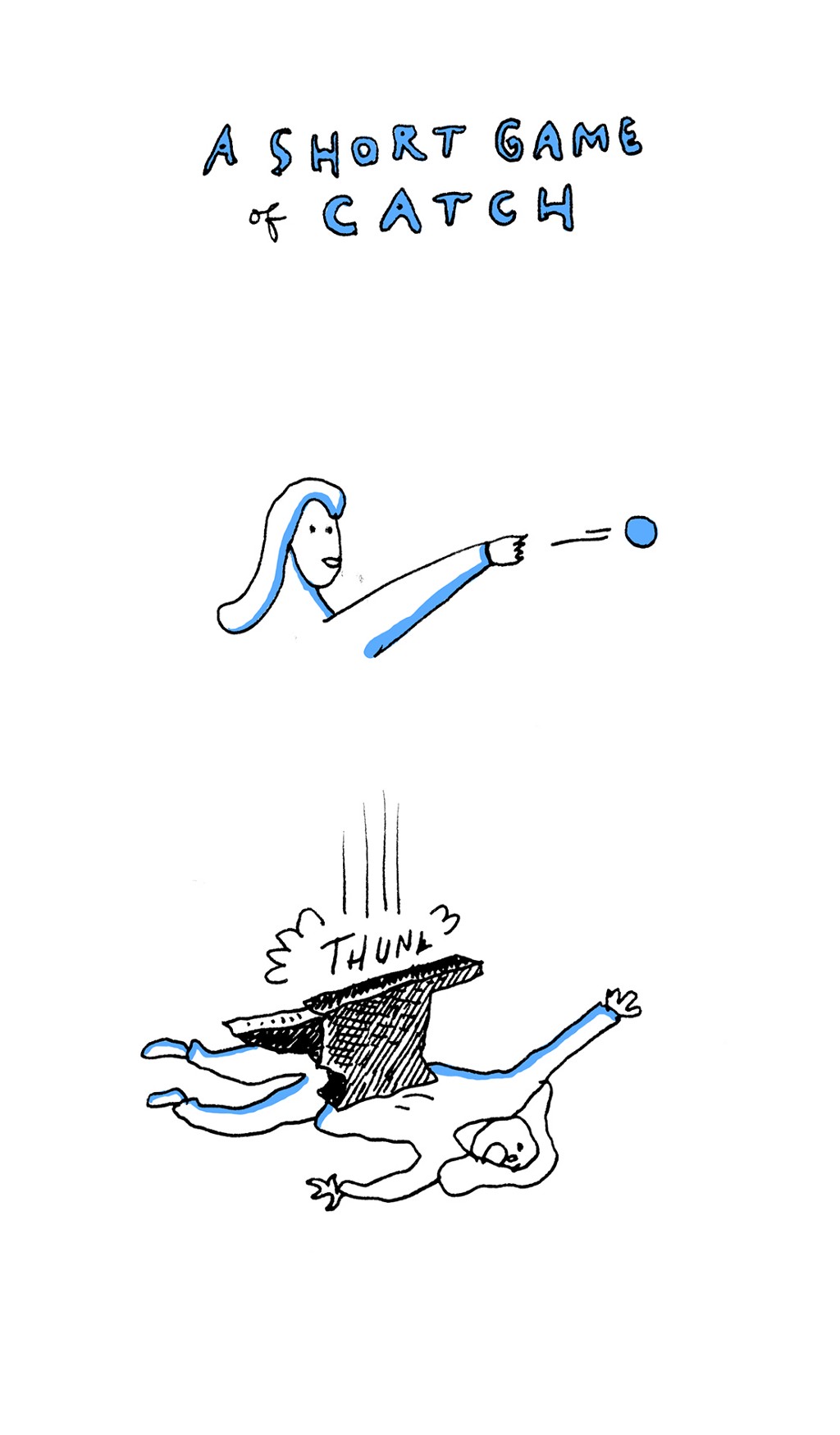
Liana Finck’s work appears regularly in The New Yorker, in Catapult, and on Instagram.
When April Fool's Day Falls On The Weekend We Get To Skip It
I don’t make the rules I just blog them.

Once every some number of years, your birthday falls on a Friday, which is the best because you get to have treats at work and then the most wonderful gift of all as your present: the weekend. Two days without work and further plot points in your Sunday-night prestige TV. Some people think it’s nice to have your birthday on a Saturday or Sunday, but this is incorrect because when you go about your regular life on a weekday that also happens to be your birthday, you know the whole time, something special is going on. There’s some undercurrent, some electric charge buzzing through that day that makes it, more so than usual, about you.
Of course, birthdays are a lie and so are joke holidays, and nothing is ever really about you, but it’s good for society to let everyone Have A Day. For the past however many years people have been smartasses online, April Fool’s Day has been The Day for the smartasses to commit the equivalent of the “there’s-something-on-your-shirt” trick, electronically flicking you on the chin. Made you click!
Everyone hates April Fools’ Day – so why does it endure?
Well guess what, this year April Fool’s Day, April 1st, falls on a Saturday. This basically means everyone is allowed, nay encouraged to opt out of it. Unwittingly engaging with April Fools on a Saturday is like getting a work email on a Sunday night. It’s not cool, and frankly it’s an intrusion on my personal boundaries and I will not stand for it. They can’t get you if you don’t look. This is your one and only warning to stay the hell away.
Have fun, be safe, make good choices, and do not engage.
Hunter/Game, "Dead Soul" (Joey Anderson Remix)
Rain.

Rain. Rain rain rain rain rain. Rain rain rain; rain rain rain rain. Rain rain rain rain — rain rain, rain rain rain rain — rain rain rain rain rain. Rain? Rain rain rain rain, rain rain. Rain rain, rain rain rain, rain RAIN RAIN RAIN RAIN RAIN! Rain. Rain, rain rain rain.
Ten Weeks Later
A reflection in verse

You’ve never felt so tired, and you’re tired all the time
Another day, a new report of yet another crime
Every hour’s an afternoon, each second lasts a minute
You shudder when your phone lights up, there’s only bad news in it
The lows come quick and constant, all more awful than the past
What highs there are are rare and fake, and worse, they never last
Any glimpse of hope is yet another sad delusion
It’s almost like they count on your frustration and confusion
As each assumption shatters you shout out in dark despair
He didn’t even want the job! Sweet Christ, why’s he still there?
Diet Cig, 'I Swear I'm Good At This'
Did you know that when today started it was a hundred years ago?

Every day I think, “Wow, I wonder if [insert domestic political news item] will be the last straw that breaks my will to live,” but it keeps not happening. Maybe it’s because I’m still waiting for the new Diet Cig album to come out. I got a stream of it at some point and I listened to it so many times it evaporated, which I suppose is the 2017 equivalent of wearing the grooves down on a record? Is that what they called it? A reh-coard?
Well today one decent thing happened, which is that NPR’s First Listen is shining its streaming spotlight on our friends from New Paltz. Hopefully you have a commute that’s just under thirty minutes, which means you can complete one full listen of I Swear I’m Good At This, before you have to get back in front of another screen to consume more stories. I’ll be over here, trying to figure out how soon I can buy Vantablack lipstick. See you tomorrow. (This has been my Alex Balk impression; so sue me, I am practicing.)
New York City, March 29, 2017

★★★★★ The weary eye, looking out into the gray, found a gleam on the metal flashing of the roof across the avenue. Dark and light tussled for a while but the outcome, though lately unprecedented, was not in doubt. By late morning the crosswalk stripes were dazzling. An ugly glass building almost dematerialized against the clear blue. Even the shade, where there was shade, swelled with second- or thirdhand light. There was sun to walk in on both sides of Broadway. The glow through the office window made it impossible to ignore that there was an outdoors, right there, waiting. Children poised on their marks for a sprint race on the sidewalk. On Sixth Avenue, a tree was in bloom.
The Hero And The Crocodile
Flawed historical figures and who can claim them.
The real-life inspiration for the character Mick “Crocodile” Dundee, played by Paul Hogan in the Crocodile Dundee series of films, is commonly cited as Rod Ansell, an Australian bush tracker and catcher of wild buffalo made famous as a survivalist when he was stranded in the Outback for two months in 1977. Though repeatedly denied by Hogan, elements of the films seem clearly based on Ansell’s media appearances. When Ansell died in 1999, he was eulogized by the press as “the real Crocodile Dundee.” Yet ask anyone in Latvia, and they’ll tell you that the character was really based on a man nicknamed Crocodile Harry.

In Queensland and the Northern Territory of Australia, Crocodile Harry hunted and killed a claimed 10,000 crocodiles (in some accounts it was 40,000!) over 13 years in the 1950s and 1960s, until the practice was outlawed. Undaunted by the restrictions, he took up surveying before settling in to the mining town of Coober Pedy, where he made a living as an opal miner. Living in a hillside dugout he called the Crocodile’s Nest — a home so bizarre it was used to film a scene in Mad Max: Beyond Thunderdome — Crocodile Harry quickly became a local legend. He charged admission to visit his home and told the Australian press that he was Arvid von Blumenthal, an exiled baron from a noble Baltic German family in Latvia.
A notorious womanizer, Crocodile Harry was also known for keeping bras and panties in the Nest as trophies of his sexual conquests. In his older years, he seems to have settled down a bit, marrying a German singer named Marta and spending his days sculpting. Obituaries announcing his death in 2006 celebrated him as Latvia’s crocodile hunter and the inspiration for Crocodile Dundee; since then, the legend of Crocodile Harry has continued to make the rounds as a bit of trivia in both Latvian and Australian blogs and media outlets.
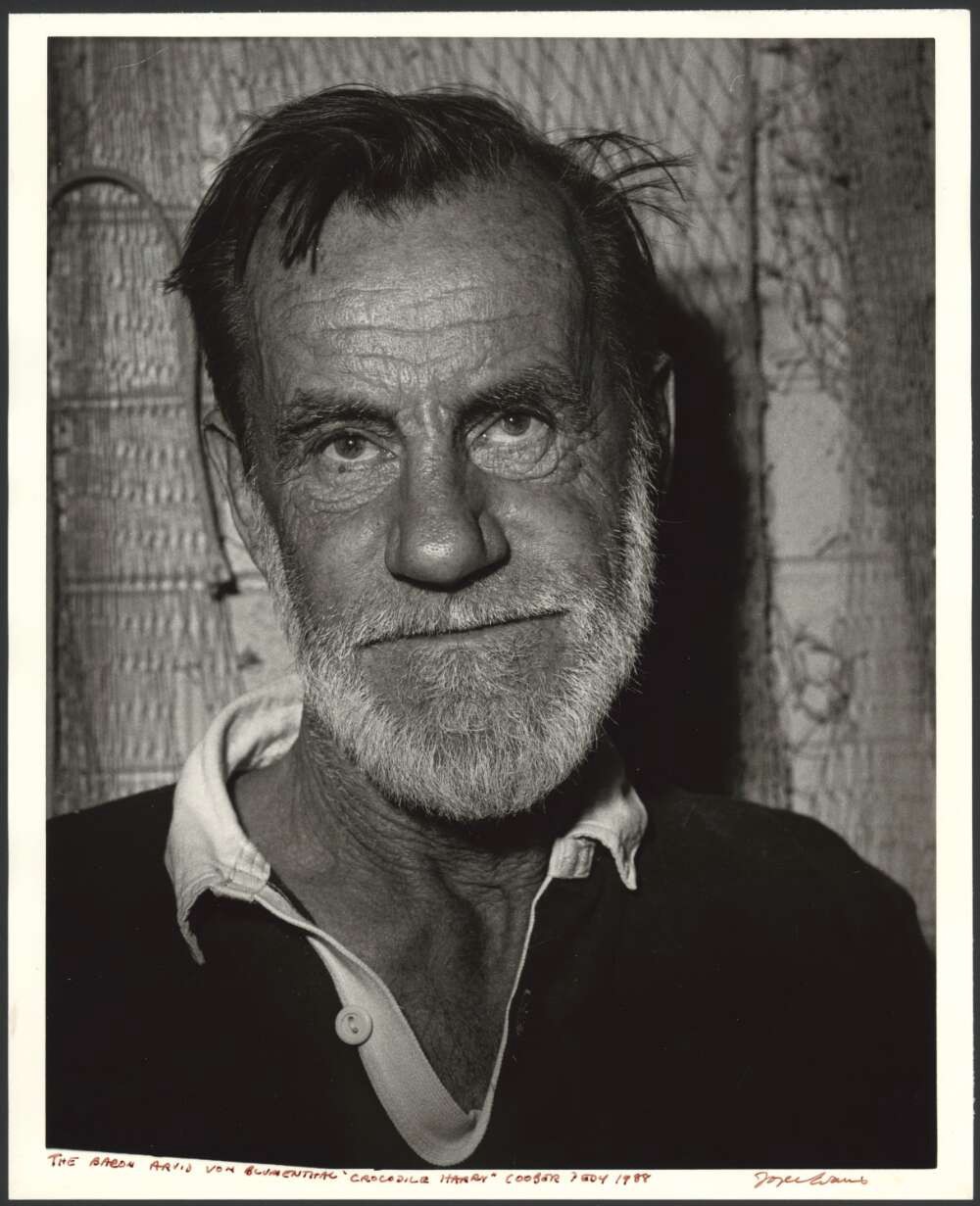
In reality, the self-styled Baltic baron was a Latvian named Arvīds Blūmentāls, born on a farm near the village of Dundaga in 1925. Having won its independence after World War I, Latvia was an independent country from 1918 to 1940, at which time it was occupied by the Soviet Union; a Nazi German occupation followed in July of 1941. At age 17, Blūmentāls dropped out of school and volunteered for the German auxiliary police, lying to recruiters that he was 18 years old. In Ukraine, he served with the 25th Abava Battalion, known by locals as the “green devils,” for both their tenacity and the color of their uniforms.
In 1943, he was transferred to the Latvian Legion, a regular combat unit in the German Waffen-SS. After a two-year long retreat westward, the remnants of his unit ended up near Berlin, where in April of 1945, he and some comrades tore off their SS insignia and tried to escape. With the help of a Latvian doctor, he removed the Waffen-SS blood group tattoo on his arm and told Allied authorities he had been a forced laborer in Germany, to avoid becoming a prisoner of war. Along with about 200 other Latvian Legion veterans, Blūmentāls joined the French Foreign Legion in 1947 and served for several years before coming to Australia.
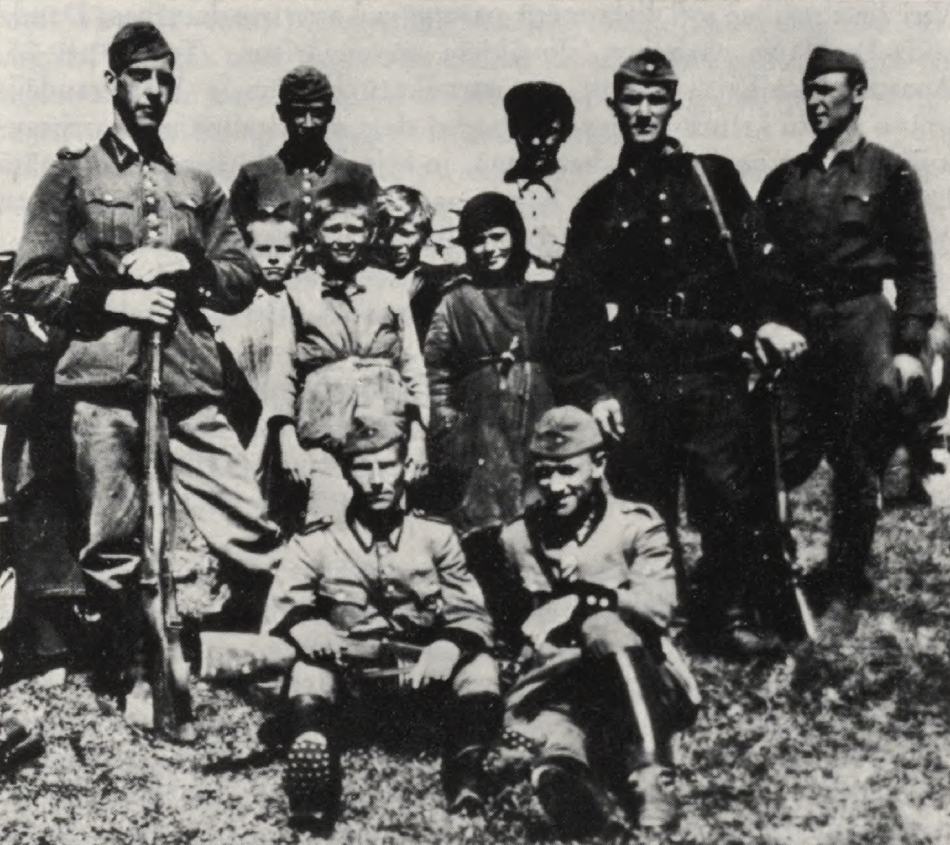
Though Blūmentāls joined the auxiliary police too late to have been a Holocaust perpetrator, he almost certainly served with men who were. Some volunteers were ideologues or opportunists, but the evidence points to Blūmentāls as a mercenary adventurer, who sought escape from the drudgery of farm work and country living. Despite this complicated history, he is celebrated in Dundaga as its native son and local hero. A statue of a crocodile has been erected in his honor near the medieval castle at the center of town; inside the castle, visitors can view a permanent exhibition celebrating Blūmentāls’s life and career. Recognized nationwide for his exploits thanks to books, news articles, and a 1995 documentary film, Krokodilu Harijs (as he is known in Latvian) remains a source of pride rather than embarrassment.


Building a pantheon of notable historical figures for a country might seem like a straightforward process. But in the borderlands of Central and Eastern Europe — characterized historically by shifting imperial borders and ethno-religious diversity — questions of ownership arise. Was Wolfgang Amadeus Mozart the great German composer or the great Austrian composer? Similarly, Adam Mickiewicz is claimed simultaneously by Poland and Lithuania as their national poet. Mickiewicz opened his epic poem Pan Tadeusz with, “Lithuania! My fatherland! You are like Health! Only he who has lost you knows your true worth,” words that inspire Lithuanian patriots to this day. But it must be remembered that Mickiewicz wrote that line in Polish and did not speak a word of Lithuanian — he was celebrating a very different Lithuania than the modern nation-state that emerged in the twentieth century.
Ambiguous ownership is one thing, but the mixed populations of the borderlands can also mean that one group’s hero is another’s villain. For leading an uprising in 1648 against Poland that established an independent Cossack state, Bohdan Khmelnytsky is considered a national hero in Ukraine and has been honored with place names, statues, and his portrait on Ukrainian banknotes. However, the participants in Khmelnytsky’s Uprising also massacred thousands of Jews, which left a lasting impact on Jewish collective consciousness in Eastern Europe. An annual fasting day was observed for centuries by the Jewish authorities in Poland to commemorate the “calamities” and their martyrs, while prominent Jewish historians like Simon Dubnow referred to the uprising as the “Ukrainian Catastrophe,” an event not matched in his mind until the pogroms and mass murder of the twentieth century.
Latvia, subjected to some form of imperial rule or foreign occupation for 752 out of the last 800 years, is a quintessential country of this borderlands region. It is under these circumstances that Latvians have cast a wide net in searching for figures to represent their nation, reaching as far away as the Australian Outback as well as dredging up some unsavory characters closer to home.
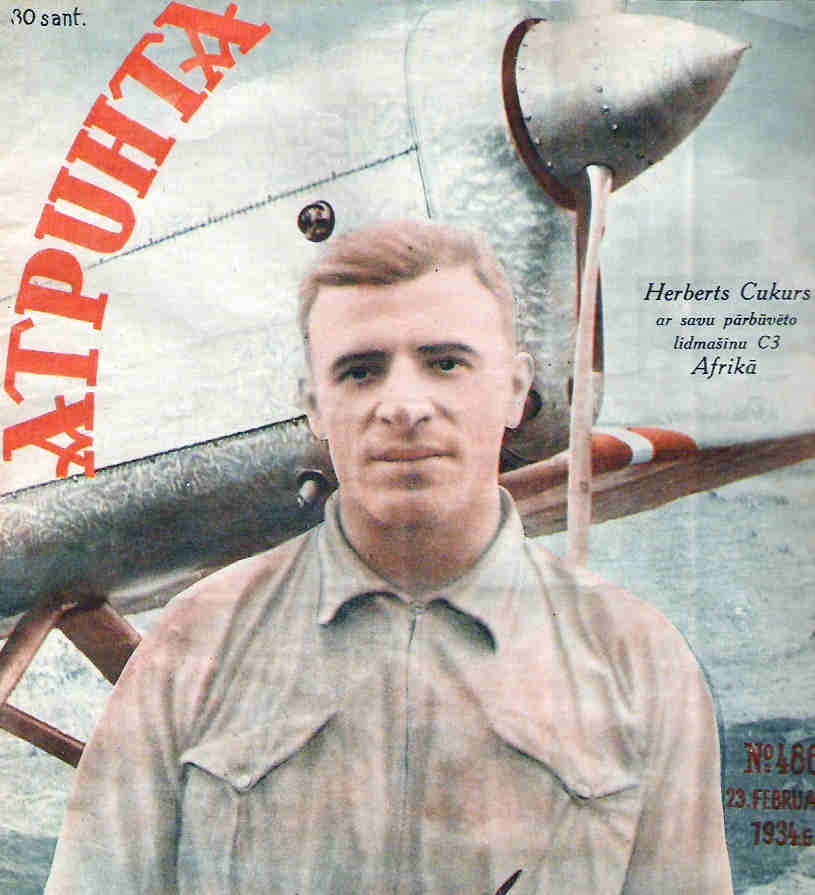
Arvīds Blūmentāls is not alone as a deeply flawed Latvian hero — take Herberts Cukurs, for example. A pioneering aviator in the mold of Charles Lindbergh, Cukurs made record-breaking long-distance flights from Latvia to both the Gambia and Japan. Like Lindbergh, Cukurs’s reputation would later be sullied by his activities in World War II. During the German occupation, Cukurs served as the right-hand man of Viktors Arājs, the leader of an anti-Jewish killing squad responsible for tens of thousands of deaths. As the war ended, Cukurs escaped to Brazil, where he worked as a pilot. But having been one of the most famous people in Latvia, he was recognized and identified by Jewish survivors, and in 1965, he was lured to Uruguay and assassinated by the Israeli intelligence service, Mossad. Yet despite his involvement in the Holocaust, Cukurs remains a relatively beloved, if controversial historical figure. In defiance of his fatal flaws as a hero, artistic works — including a novel, Flesh-Coloured Dominoes by Zigmunds Skujiņš, and a musical, Cukurs, Herbert Cukurs — have presented him as a rescuer, rather than murderer of Jews. This strange and cynical inversion of history is condemned by academics and Jewish organizations across the world, but such objections are inevitably shrugged off by Cukurs’s admirers.
In refusing to categorically repudiate historical figures with ties to the Nazi German occupation and the Holocaust, Latvia is not alone in the borderlands of Europe. In neighboring Lithuania, “not a single Lithuanian sat one day in jail” for atrocities committed in collaboration with Nazi Germany, while nonagenarian former Jewish partisans are still pursued by prosecutors for their alleged war crimes. In Ukraine, the state-sponsored rehabilitation of Ukrainian nationalists who inspired or took part in the massacre of thousands of Jews and Poles during the war has raised tensions with Poland, Russia, and Israel.
But Latvia is perhaps unique for combining endearment for violently nationalist figures with public pride for cosmopolitan members of minority groups who also happened to live in Latvia. Along with some famous Germans who lived temporarily in Riga like the composer Richard Wagner, the Latvian Jewish community has produced some of the most internationally recognized figures with connections to Latvia. Filmmaker Sergei Eisenstein and philosopher Isaiah Berlin were both born in the present-day Latvian capital of Riga, while Mark Rothko was born in the city of Daugavpils, located in eastern Latvia. Today, the Latvian state seeks to claim them as its representatives, with an exhibition, a commemorative day, and a museum dedicated to Eisenstein, Berlin, and Rothko, respectively. But these three men all emigrated relatively early in their lives and none of them felt any particular attachment to Latvia thereafter. Furthermore, as Jews, had these men remained in Latvia, they almost certainly would have died in the Holocaust, most likely killed by someone like Blūmentāls; it feels somewhat absurd to place them all together in lists of “famous Latvians.”
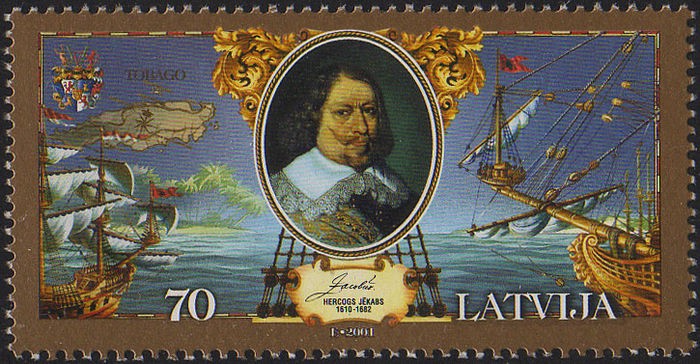
Controversies over World War II in Latvia occupy the most ink and airtime internationally, but “Nazis” (Latvian historians eagerly point out non-Germans couldn’t be Nazi Party members) are not the only bugbears to be found; earlier figures present problems of veneration. Blūmentāls’s hometown of Dundaga was ruled in the seventeenth century by Jakob von Kettler, the Duke of Courland and Semigallia. Duke James — as he was known in English — became the ruler of Europe’s smallest colonial power, when he founded New Courland and its capital city Jamestown (in German, Jacobusstadt) on the Caribbean island of Tobago. He also established a trading post at the mouth of the river Gambia in Africa. In search of a usable past, Latvians tend to venerate the Duke — a Baltic German who likely felt more connected to the royal courts and universities of Germany than the Latvians over which he ruled — as a good ruler and the founder of a “Latvian” colonial empire. But the wealth that flowed from the colonies back to Latvia was predicated on slave labor; the fort and trading post served as a holding pen, where kidnapped Africans were placed in chains to await their shipment to the Americas as slaves.

Historically, North Americans and Western Europeans have assumed a (baseless) sense of moral superiority over Eastern Europeans. The American Founding Fathers preached liberty while they owned slaves, and European colonialism was as bloody and brutish as the totalitarian regimes of the twentieth century so universally condemned today. A number of American historical figures have recently been subjected to public reevaluation. After months of obstinacy, Yale University finally decided in February to rename Calhoun College — honoring the intellectual godfather of secessionism and staunch defender of slave power, John C. Calhoun — to commemorate Grace Murray Hopper, a mathematician and pioneering computer programmer who ended her career as a U.S. Navy admiral. At Princeton University, students began a campaign in 2015 to remove Woodrow Wilson’s name from campus buildings and the university’s school of public policy. Wilson served as president of both Princeton and the United States, but has faced renewed scrutiny for his racist views and support for segregation.
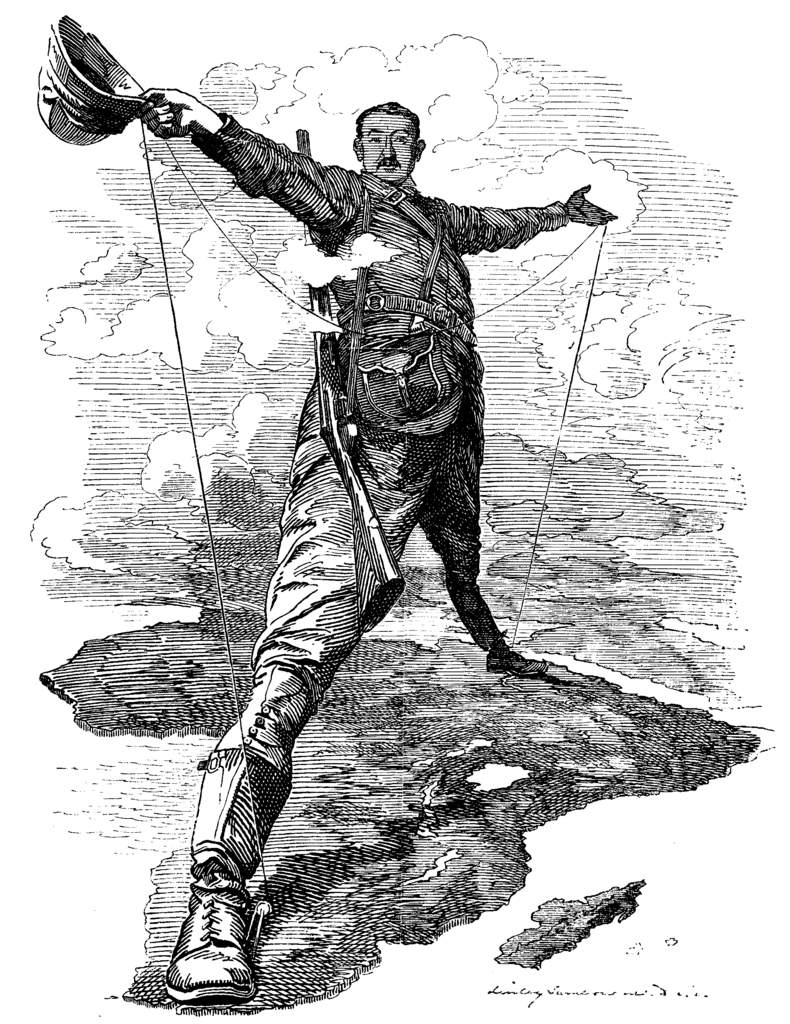
If the topic of colonialism is not deeply tainted in Latvia, on Tobago itself the colonial encounter was distant and brief enough that Latvian tourists to the island are purely an object of curiosity or bemusement, rather than scorn. In other postcolonial states and the former colonial metropoles in Europe, this is not the case. A movement called “Rhodes Must Fall” has emerged in South Africa that seeks to remove statues and symbols of Cecil Rhodes from universities there. As the architect of British colonialism in Africa, a believer in the racial supremacy of Anglo-Saxons, and perceived as a facilitator of the apartheid system that would emerge after his death, Rhodes is considered an intolerable symbol of colonialism and white supremacy in post-apartheid South Africa. After successfully toppling a statue of Rhodes at the University of Cape Town, Rhodes Must Fall spread to Oxford University, where another statue of Rhodes has become a target, though for now it remains standing. Since some of the South African anti-Rhodes activists responsible for spreading the movement to Oxford are beneficiaries of the eponymous Scholarship, a favorite tactic of their critics has been to accuse protestors of ingratitude or hypocrisy, rather than try to understand the basis of their critique.
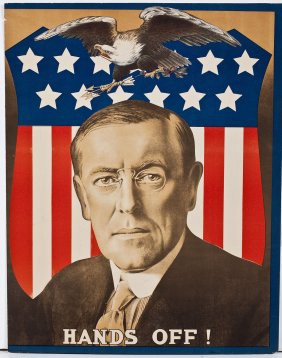
Which legacy to emphasize when remembering a historical figure is, of course, a matter of perspective. For his support of national self-determination, U.S. President Woodrow Wilson was a revered figure in Central and Eastern Europe between the World Wars. In The Ordeal of Woodrow Wilson, another former president, Herbert Hoover, recalls that the signing of the Treaty of Versailles in 1919 was met with elation in the cities of Latvia, with delegations bearing messages of gratitude meant for President Wilson and Latvian musicians playing “Yankee Doodle” as they paraded.
If he is remembered at all today in Latvia, Wilson would be thought of as a hero. But to celebrate Wilson the liberal internationalist and ignore Wilson the white supremacist is no longer viable among Americans who have absorbed developments in historiography and recognize the continuities between Jim Crow a century ago and systemic racism today. In every case, these historical reevaluations will be met with references to babies and bathwater, but they serve as a reminder that history is not an unchanging canon. Emerging from the same universities once attended and patronized by these men, what these parallel movements reflect is current historical scholarship and discourse — not anti-intellectual and immature manifestations of student protest gone wrong, as often painted by their critics.

Despite the obstacles presented by academia and the general public’s attachment to romantic nationalist versions of history in the Baltic States, the impulse to aggressively and publicly challenge prominent historical figures is not entirely absent there. The author Rūta Vanagaitė became interested in coming to terms with the murder of Lithuanian Jews by their gentile neighbors under the German occupation. To do so, she teamed up with the “Nazi hunter” Efraim Zuroff and traveled across Lithuania, producing the book, Our People: Journey With an Enemy. Crucially, Vanagaitė exposed her own grandfather — a man celebrated for his role in the protest movement that eventually restored Lithuanian independence from the Soviet Union in 1991 — as a collaborator who compiled lists of Jews for the Germans to detain and murder.
Against accusations that she is a Russian provocateur or a closeted Jew, Vanagaitė insists instead that “a mature nation must know its history so it is not repeated.” Across the Atlantic, another woman with both Lithuanian and Jewish heritage has come forward with a similar story. In A Guest at the Shooters’ Banquet: My Grandfather’s SS Past, My Jewish Family, A Search for the Truth, Rita Gabis recalls her grandfather as a man respected in the Lithuanian-American community for opposing the Soviet Union as a partisan. But it is later revealed that he had also served as a local chief of the German occupation’s Security Police, with archival documents uncovering his role in arresting Jews and managing the local ghetto. Taking on the cherished notions of nationalist historical narratives is in many ways like being open and honest about complex and distasteful elements of family history — it takes courage, clarity of purpose, careful research, and the ability to connect the particular with the general. As Gabis puts it, with a simplified nationalist narrative populated only by heroic caricatures, “you lose complexity and texture, and the opportunity to be challenged or to grow.”
Next year, Latvia will celebrate the centennial of its declaration of independence; already, Latvians are searching for new or heretofore underappreciated figures to represent their nation. The preoccupations of the generation of Latvian World War II refugees — opposing the Soviet Union and its occupation of Latvia in the context of the Cold War and responding aggressively to any accusations about their own culpability during the war — and the fears during the 1990s of an isolated, vulnerable Latvia seem ever more distant. Tensions with Russia aside, Latvia today is a full member of the European Union and NATO and feels more and more like a cohesive nation-state as many of the children and grandchildren of Russian immigrants reach adulthood with fluency in Latvian and pride in their country. The further we move into the twenty-first century, the more Latvian history will likely look differently to its citizens. And someday soon, celebrating a man like Arvīds Blūmentāls might appear as absurd as hunting for crocodiles in the snows of Latvia.
Harry Merritt is a Ph.D. Candidate in History at Brown University.
Odd Lots: Curious Objects Up At Auction
An anatomical model, haute couture newsprint, and a ticket to America’s first impeachment
Lot 1: Nightmare in Wax
Coming up in Hong Kong on April 4 is an auction devoted to “Curiosity,” a trendy catch-all for fossils and ancient figurines, and, in this case, mammoth tusk snow goggles and an eighteenth-century steel corset. It is lot 3008 that really turns heads, though.
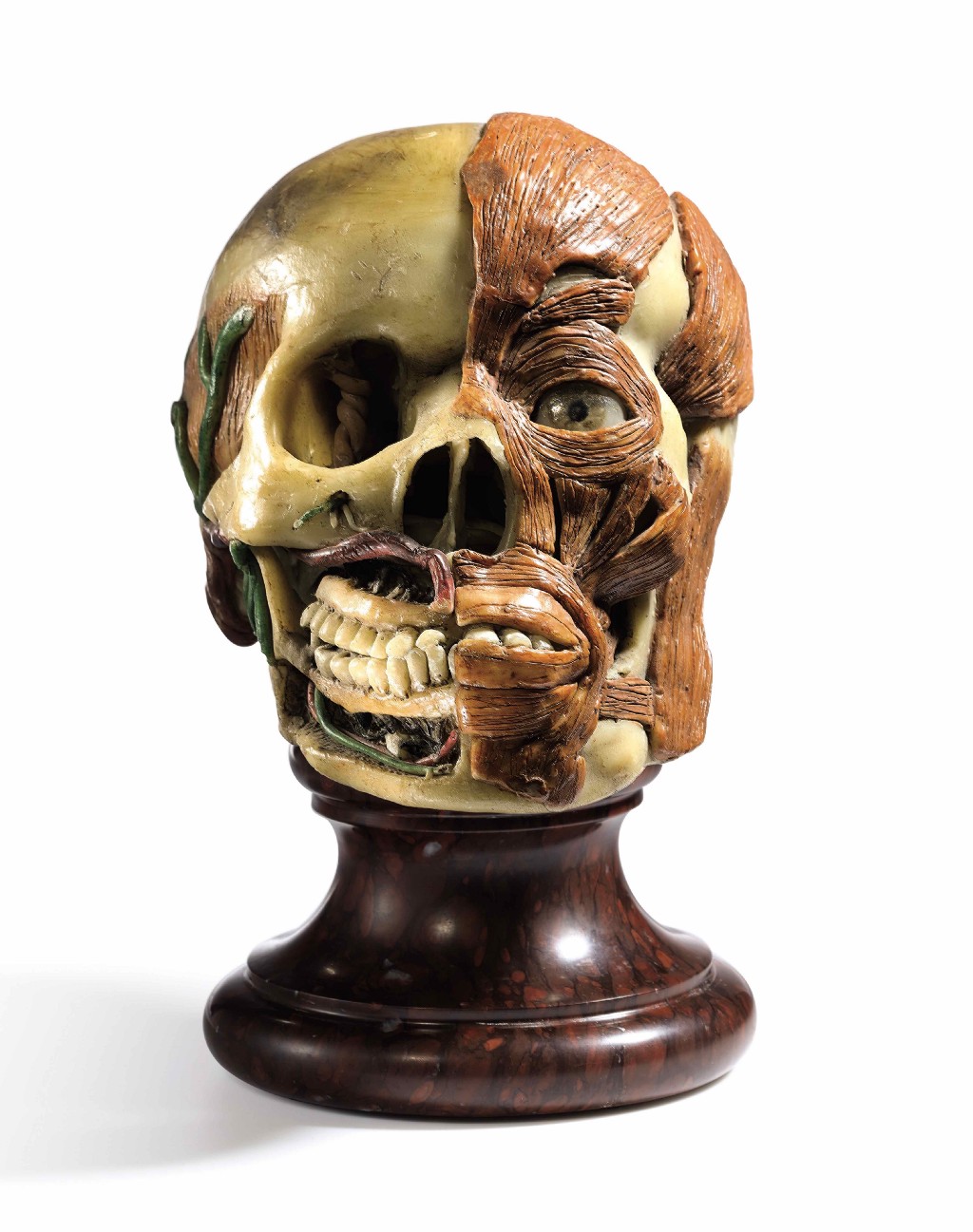
This wax anatomical model divides the human head into two halves: the left showing an empty eye socket, teeth, and a network of cranial nerves; the flayed right half revealing the facial muscles. Eighteenth- and nineteenth-century artists produced realistic wax models such as this for medical students, based on available drawings or under the direction of the rare surgeon who had actually practiced on a real cadaver. (Dissectible wax women were the basis of a major exhibit and a fascinating book, The Anatomical Venus by Joanna Ebenstein, in 2016.)
According to Sotheby’s, this objet d’art (and science) was possibly crafted by a follower of Clemente Susini, an Italian sculptor known for his vivid anatomical models. It is estimated to sell for about $30,000.
Lot 2: All the News that’s Fit to Wear
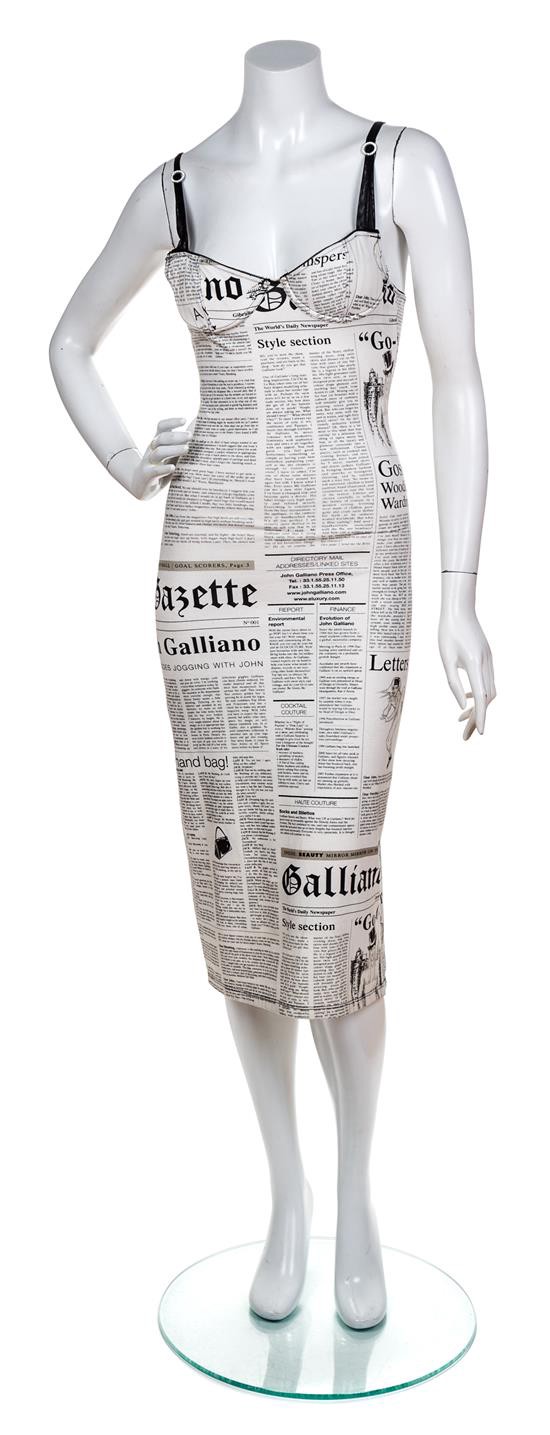
While Sex and the City fans may bolt upright at the phrase “newspaper dress,” this haute couture newsprint slip dress varies slightly from the much beloved one (see #8 or #15) worn by Carrie Bradshaw in the now-classic HBO series. Carrie’s flouncy version was a Dior designed by John Galliano. This one, for sale in Chicago on April 5, also designed by Galliano under his own label, is more of a hip-hugger, with mesh straps and black lace trim. And while the style may have been different, the message was the same: newspapers are chic. (Right?!)
The listed size is 30, but that’s European sizing. In America, it’s a size 0, fit for mannequins and tweens with $500 to spare.
Lot 3: The Hottest Ticket in Town
Want to re-enact a presidential impeachment? Grab your ticket and get in line.
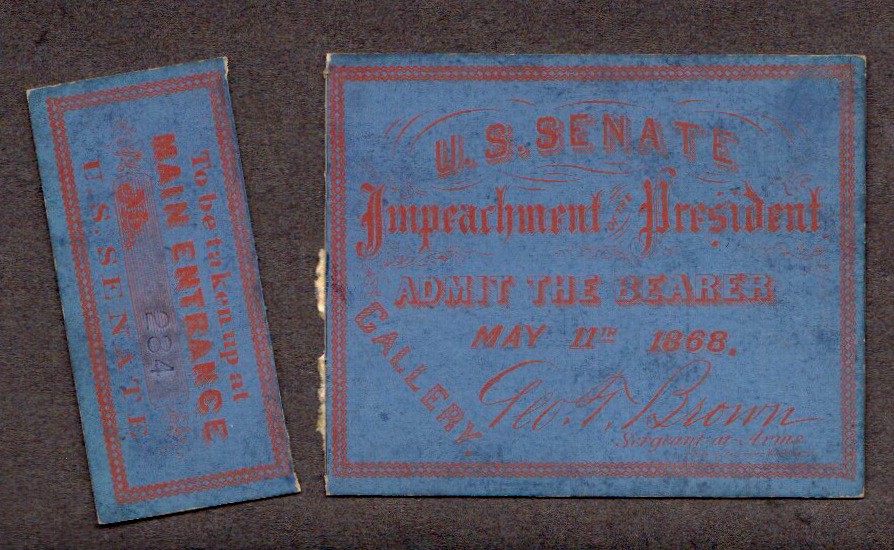
In 1868, gaining admittance to the year’s best spectacle meant securing a ticket to one of President Andrew Johnson’s impeachment trials. What did the seventeenth president do to deserve such unfair treatment? In short, he appeared too lenient with the Confederate states in the aftermath of the Civil War and removed from office Secretary of War Edwin Stanton, with whom he disagreed. Apparently Johnson did not have the power to make that decision solo, so the House of Representatives took the opportunity to impeach him in February. Then the case went to the Senate for a series of trials spanning March to May; the ticket and detached stub seen here admitted the bearer to the May 11 proceedings. In the end, one vote acquitted Johnson.
This political tidbit goes under the hammer in the battleground state of New Hampshire during an April 8–9 autographs auction. Bidding starts at $240.
Rebecca Rego Barry is the author of Rare Books Uncovered: True Stories of Fantastic Finds in Unlikely Places.
Copland's 'Rodeo' Is An All-American Treat
Classical Music Hour with Fran

I, like presumably everyone else in the world, am in the midst of a rewatch of all of the Fast & Furious movies. This past Friday, I rewatched the 2011 classic Fast Five (the best in the franchise), and I was struck by a line said by Dwayne “The Rock” Johnson. Some random operative in the military is talking to The Rock’s character, and he says the classic movie line of, “Good news, bad news.”
Without missing a beat, The Rock goes, “You know I like my dessert first.” And once the good news has been delivered, The Rock demands, “Gimme the damn veggies.” All of these lines might sound like a wild non sequitur for this column and/or a shameless plug to watch or rewatch Fast Five (you should), but they also made me realize that going a month on Brahms-related material was truly like a month of veggies. A month of damn veggies. That’s not to say Brahms and the Schumanns and Wagner aren’t all enjoyable — they are! — but like roasted cauliflower, you kinda gotta know what you’re working with. And even though I actually have not yet managed to finish my book, to quote what I’m sure is said in some other movie, “It’s time to move on.”
So this week I’m writing about full dessert. This is, like, some brownie sundae shit, I kid you not. This week, I want to bring you Aaron Copland’s 1942 Rodeo ballet (a 2013 recording by the Detroit Symphony Orchestra directed by Slatkin; I know it’s not Bernstein, I know). Aaron Copland, as his name may suggest, was a 20th-century American composer. While it’s Dvořák whom we credit, perhaps, with the invention of an “American sound,” Copland perfected it. Anything you think of as being purely American — cowboys, big wide plains, imperialism, you name it — Copland has a tune for it. While our German pals from the last month were busy fighting each other about the future and meaning of music — what made it good, what made it pure — Copland was a little more focused on bringing music to people. He was a populist. His work is easy to listen to on purpose.
So: Rodeo. This is pure Americana. I don’t care who you are or where you’re from; Rodeo is going to rile you up. It’s going to make you feel good. The 1942 ballet doesn’t sound particularly like any of the ballets we’ve previously looked at, and that’s okay. It does have a fairly standard ballet plot, if you will: a female lead known as The Cowgirl is forced to compete against other girls for the love of the Champion Roper. If this doesn’t sound like what every day in America is like, then you and I have different lives, my friend.
The opening movement is called Buckaroo Holiday and it rules. I mean, crash of the cymbals, fanfare, all that jazz. It pulls you directly in. All of the movements in Rodeo have a distinct southwestern American sound to them, clearly drawing on folk music from the American west. This movement also has one of my hands-down favorite sections of any classical piece I’ve ever heard. It’s borderline funny. Even if you listen to nothing else, cue up Buckaroo Holiday and go right to that 3:18 mark. You’re going to hear a back and forth between the cellos and basses, and the bassoon. It’s almost as if the bassoon is trying to coax something forward and then: at 3:32, we got one of the most de-fucking-lightful trombone solos in the history of music. I mean listen to that crescendo at 3:39. It’s SO GREAT. I laugh every time. Finally… it is the trombone’s time to shine.
The second movement is the Corral Nocturne, a sweet and quiet piece only about 4 minutes long. (Even the longest of the movements, Buckaroo Holiday is only about 8 minutes; there are no 20-minute-long movements here because this is music for the people, remember? It was World War II. No one had 20 minutes.) This nocturne is a very string-heavy tone poem. It’s hard to key into any particular part of it; it’s such a fully complete ballad. It hems and haws, like an August night out on someone’s porch, which is very effective after the maniacal energy of Buckaroo Holiday.
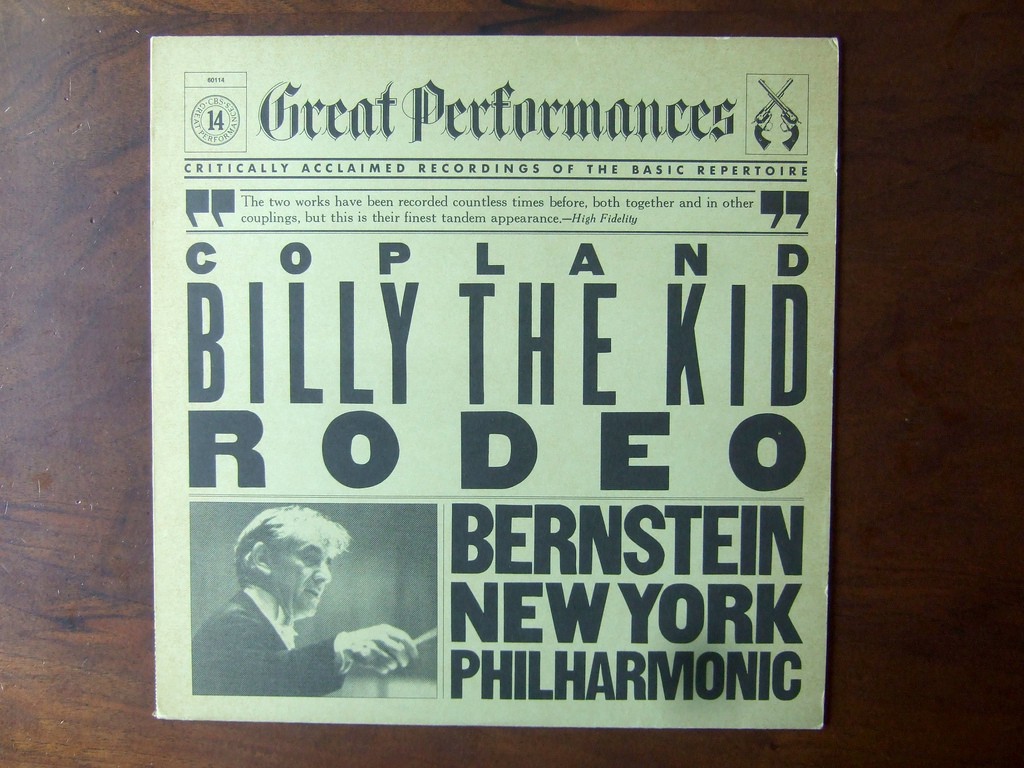
Now, the reason I went with the Detroit recording versus a more established one (e.g. Bernstein conducting in the 1960s, a CD I actually purchased in high school) is that it includes the third movement, often left out of symphonic renditions of Rodeo. That third movement is called Ranch House Party — I’m not kidding — and after the calming conclusion to Corral Nocturne, this piano introduction comes in like a shot. This is some full-on ragtime shit. This is the sound of a house party if I’ve ever heard it. This is like the music they play before movies at old movie theaters. We don’t even hear another instrument before the 50-second mark, and then we have a wistful solo on the clarinet, representative of the Cowgirl protagonist in the ballet. The end of Ranch House Party recalls the theme of the Corral Nocturne as the Cowgirl is once again on her own.
The fourth movement, Saturday Night Waltz, is my favorite of the suite. While I’m often tempted by the playful nature of Buckaroo Holiday or the pure insanity that is the fifth and final movement (we’ll get there), Saturday Night Waltz has always represented, to me, what is so great about Copland’s music. It begins with wide, heavy introduction, fully beckoning you in. Then about 31 seconds in, the main melody kicks in and it’s gorgeous. It’s simultaneously folksy, but colorful and rich and emotive as anything any of the old Germans could have produced. It’s romantic without laying its whole heart out. It’s a ballet romance, after all, so it feels performative — almost too crafted, too sincere, but still. What a good performance it is.
And then: Hoe Down. If you’ve heard anything from Rodeo before now, it’s likely you know Hoe Down. A high-octane joyride of a 5-minute piece that honestly feels as if it’s only 30 seconds long. It bursts open at the start before the strings and horns fade into the background for a little dance between the low strings and the woodblock. The woodblock!! Have you ever heard so prominent a “clack”? It’s magical, I swear to you. When the chorus returns, there’s xylophone added in for good measure. This is an iconic percussion piece with enough parts for everyone to have their fair share. Triangle, snare, crash cymbals, woodblock!!! You name it! There’s also a wonderful solo section midway through, beginning with the trumpet at the 1:43 mark and going into the clarinet soon after then the violin. This Copland also thinks he’s got a false ending in him, bringing it all together at around the 2:30 mark before… it’s very clearly not. Nice try, populism. But our woodblock is back in the spotlight. 🙂 In fact, Copland gives us another false ending after that around the 3:55 mark before… BOOM, it’s our finale. It’s one last recapitulation of the main melody and you’re like, “this is insane now.” Which is fair. Hoe Down is wild and free and strange and funny, which is just about all you can say about American music.
Fran Hoepfner is a writer from Chicago. You can find a corresponding playlist for all of the pieces discussed in this column here.
